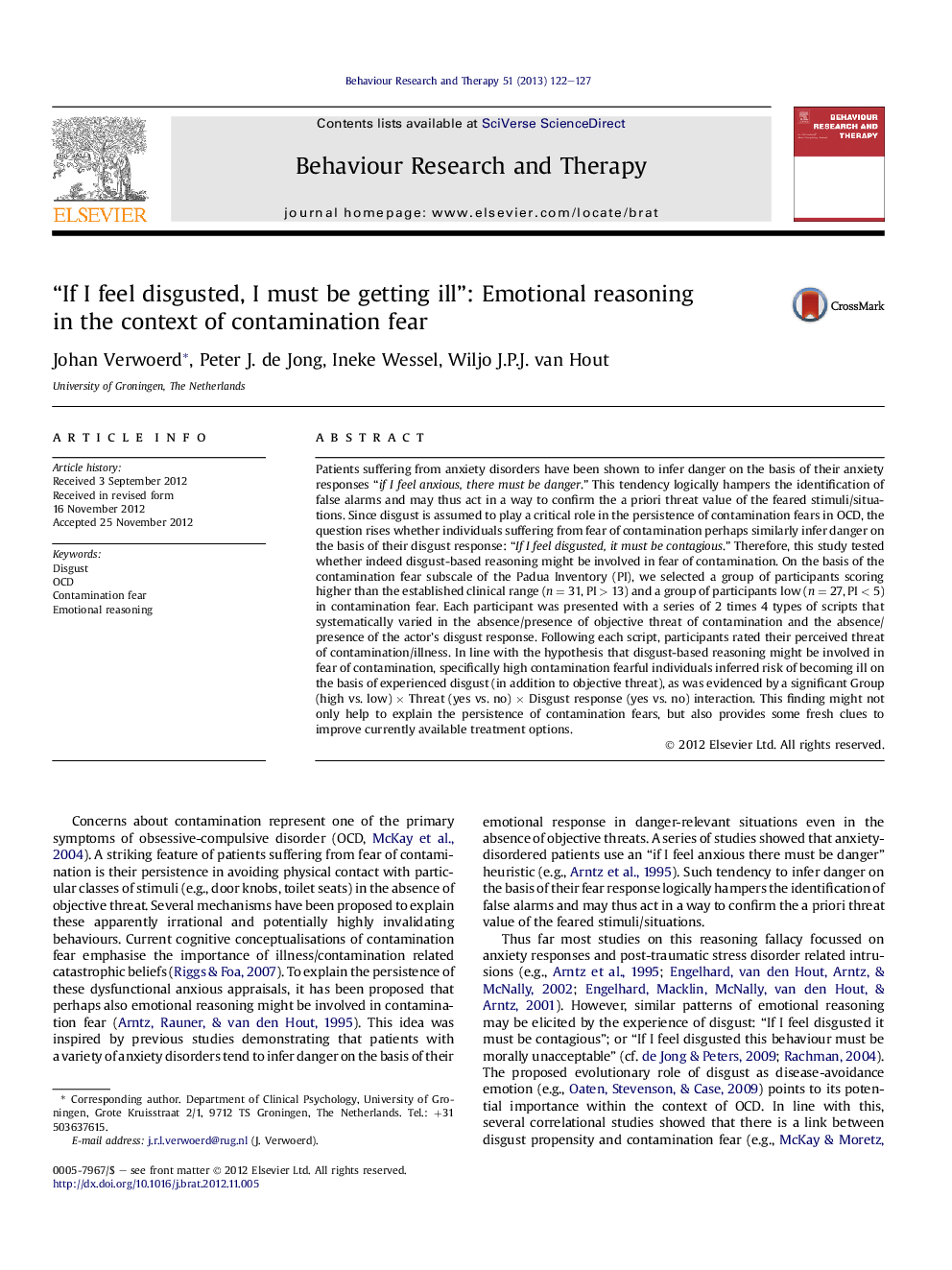| Article ID | Journal | Published Year | Pages | File Type |
|---|---|---|---|---|
| 901896 | Behaviour Research and Therapy | 2013 | 6 Pages |
Patients suffering from anxiety disorders have been shown to infer danger on the basis of their anxiety responses “if I feel anxious, there must be danger.” This tendency logically hampers the identification of false alarms and may thus act in a way to confirm the a priori threat value of the feared stimuli/situations. Since disgust is assumed to play a critical role in the persistence of contamination fears in OCD, the question rises whether individuals suffering from fear of contamination perhaps similarly infer danger on the basis of their disgust response: “If I feel disgusted, it must be contagious.” Therefore, this study tested whether indeed disgust-based reasoning might be involved in fear of contamination. On the basis of the contamination fear subscale of the Padua Inventory (PI), we selected a group of participants scoring higher than the established clinical range (n = 31, PI > 13) and a group of participants low (n = 27, PI < 5) in contamination fear. Each participant was presented with a series of 2 times 4 types of scripts that systematically varied in the absence/presence of objective threat of contamination and the absence/presence of the actor's disgust response. Following each script, participants rated their perceived threat of contamination/illness. In line with the hypothesis that disgust-based reasoning might be involved in fear of contamination, specifically high contamination fearful individuals inferred risk of becoming ill on the basis of experienced disgust (in addition to objective threat), as was evidenced by a significant Group (high vs. low) × Threat (yes vs. no) × Disgust response (yes vs. no) interaction. This finding might not only help to explain the persistence of contamination fears, but also provides some fresh clues to improve currently available treatment options.
► Disgust-based reasoning in contamination fear was explored using a scenarios approach. ► High-CF participants used disgust-response information to infer risk of becoming ill. ► High and low CF participants did not differ in ratings of danger and contamination. ► Future work should explore disgust-based reasoning in the persistence of CF and OCD.
